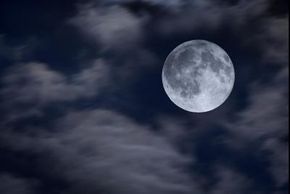Key Takeaways
- The moon has potential for clean energy generation through methods like solar power and helium-3 extraction.
- It may be possible to take advantage of the unfiltered sunlight on the moon by installing photovoltaic panels on its surface.
- Helium-3, abundant on the moon's surface, could potentially fuel nuclear fusion reactors on Earth.
A few decades ago, the pursuit of clean energy was "green." Now, it's a necessity. Not only is our power consumption propelling the human race toward a hot, watery, lonely end, but clean energy tends also to be renewable. And renewable energy is the name of the game when current primary power sources are dirty, finite or both.
In short, Earth is in an energy crisis, and some experts are looking beyond terrestrial elements for a long-term solution. Some scientists are turning to the moon.
Advertisement
Moon energy is not an entirely new concept. One power source already in operation relies on the moon's gravitational pull to spin its generators. Tidal power plants arranged like hydroelectric dams have been around for decades. They trap water during high tide and then, during low tide, release it through turbines. According to Energy Quest, one plant in France that opened in 1966 still powers hundreds of thousands of homes.
Tidal undercurrents can also spin freestanding "tidal turbines" placed strategically on the sea floor. Still in testing stages, one turbine in Norway's Kvalsund Channel began powering 35 homes in 2003, and a project at the bottom of New York's East River is planned to provide thousands of homes with electricity in coming years.
Moon-as-energy-source, though, gets a whole lot more sci-fi than that.
The helium-3 approach to clean energy, on the books since the mid-1980s, isn't even close to viability, but its promise is hard to discount. The He3 ions in the moon's upper crust -- about 1 million metric tons, according to proponents -- could keep U.S. lights on for about a thousand years, according to Energy Bulletin. All it would take is some nuclear fusion to release the potential.
Oh, and a mass-scale mining project on the lunar surface.
Advertisement



